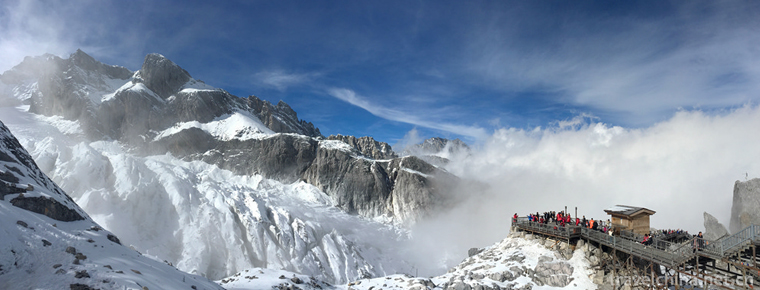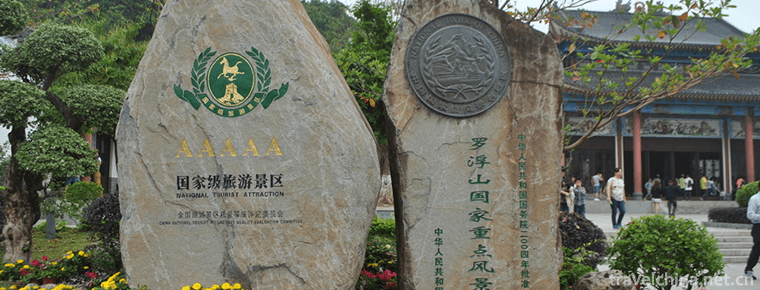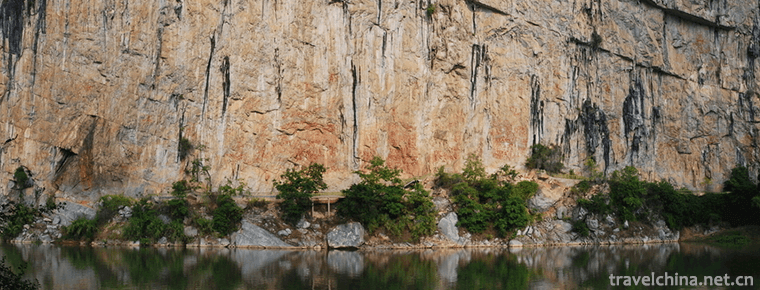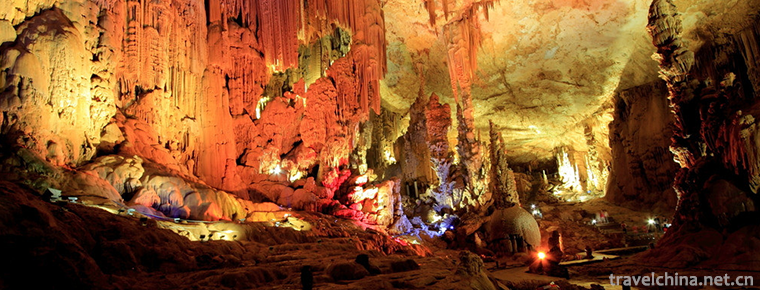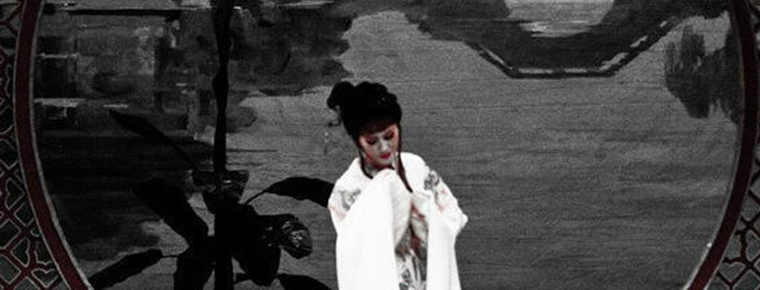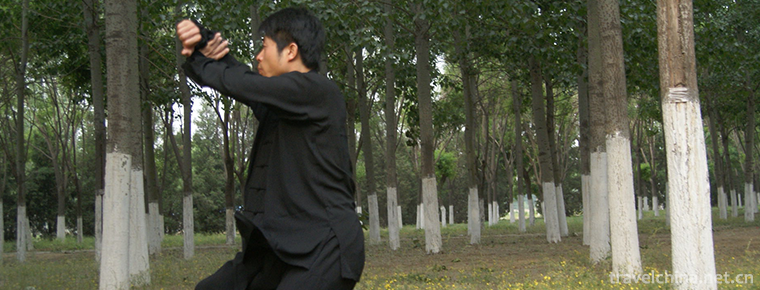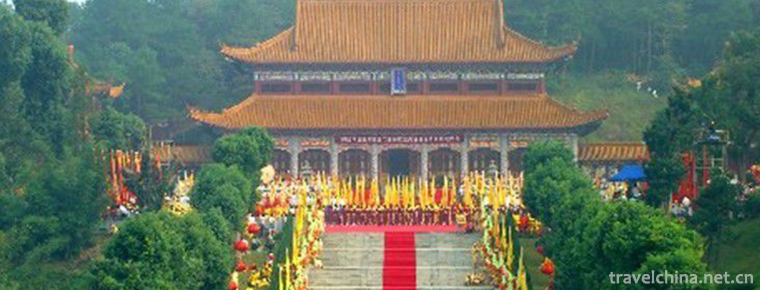Conch Valley Scenic Area Hailuogou
Conch Valley Scenic Area
Hailuogou is located in Moxi Town, Luding County, Sichuan Province, on the eastern slope of Gongga Mountain. It is a very high mountain area on the eastern edge of the Qinghai-Tibet Plateau. Located at the foot of Gongga Snow Peak, Hailuogou is famous for its low-altitude modern glaciers. Shining modern glaciers pour down from high valleys; huge ice caves and steep ice bridges make people like crystal palaces in mythology.
Especially the unparalleled Big Ice Falls, as high as 1000 meters, about 1100 meters wide, more than ten times larger than the famous Huangguoshu Falls, magnificent. Conch Trench is the lowest modern glacier discovery area in Asia, with an elevation of 2850 meters. Its ice waterfall is 1080 meters high and 0.5 meters wide to 1100 meters wide. It is the highest ice waterfall ever found in China. The trench contains large flow boiling hot and cold mineral springs, large area of virgin forest and high glacial erosion peaks, a large number of rare animal and plant resources, and the golden and silver mountains are magnificent. On October 9, 2016, the National Tourism Administration issued the "Red and Black List" for 11 holidays, and the Hailuogou scenic spot was listed as the best tourist service scenic spot. On February 25, 2017, it was newly promoted as a national 5A tourist attraction.
Historical evolution
Tang Dongjiebufa, a great achievement of the post-Tibetan Shangba Garga School in history, traveled to India, Han Dynasty and other places of Kangzang. Knowledgeable, wise and skillful, he built 128 Buddhist pagodas and 128 bridges in Tibet, Ganzi and Qinghai Tibetan areas. Tang Dongjiebufa, the founder of Tibetan opera, founded the Yao Wang Temple in Tibet and wrote many historical stories of opera singing. He has profound knowledge in medicine and invented Baiwan, a Tibetan medicine which can cure all kinds of diseases in internal medicine, and Hongwan, a Tibetan medicine which can cure epidemic plague. He died in KangDistrict at the age of 125 and was one of the longest-lived Tibetans. He is an outstanding and influential architect, Buddhist, dramatist, historian of Tibetan medicine and master of bridge. All his life, he has made great achievements and made great contributions to the future generations of the sacred Buddhist figures. King Jebfa of the Tang Dynasty left his footprints in Hailuogou, Yanzigou and Dadu valleys and built the old sites of temples, Manidou and Buddhist pagodas.
One day in the mid-summer of 1705, King Jebfa of Tang Dong came to the Luding Bridge Bridge construction site and saw that craftsmen were at a loss to cross the river with iron ropes. He instructed craftsmen to use bamboo ropes to pierce short bamboo barrels and tie them up with bamboo ropes to slip through the barrels. The craftsmen hang the rope, which is more than 40 feet long and weighs more than 2,000 kilograms. When King Jebfa saw that the craftsmen could not pull the rope keys, he took out his treasure conch and blew three times. The magical conch voice ghost made the magic conch slip away and safely crossed 13 rope keys.
After the completion of Luding Bridge, King Jebfa of East Tang took the road to build a pagoda on the west slope of Fanxueshan Branch of Hailuogou. Living in a glacial megalithic rock cave in a dense forest at night in Hailuogou, I chanted Buddhist Sutras in front of the cave in the morning and evening, kneeling in front of Gongga Shenshan. When I blew conch, birds and animals in the forest surrounded the cave to listen to his chanting. After King Djiboufa left, birds and animals still gathered around the rock cave according to the time when King Djiboufa blew conch. At the top of the cave, trees grew out, flowers and plants gathered among all living beings. One day King Tang Dongjiebufa gave his disciple Tuo Meng, saying that he had lived in the cave boulder in Hailuogou, and had been named "Conch Lingshi" by Gongga Mountain magic. The deep valley he had traveled through was sealed with conch, his treasure. The names of Conch Trench and Conch Lingshi are thus named.
geographical environment
position
Hailuogou is located in the southeast of Ganzi Tibetan Autonomous Prefecture, Sichuan Province, and on the eastern slope of Gongga Mountain. It is a very high mountain area on the eastern edge of the Qinghai-Tibet Plateau. It is 296 kilometers away from Chengdu.
Located at the foot of Gongga Snow Peak, Hailuogou is famous for its low-altitude modern glaciers.
Geology and geomorphology
To the east of the main peak ridge line of Gongga Mountain in Hailuogou is a steep high-mountain canyon with obvious relief. The Dadu River roars and rushes with narrow water depth and steep cliffs. In the horizontal distance less than 30 kilometers up to more than 6500 meters, the formation of the world's rare Grand Canyon.
Causes of formation
The formation of Gongga Mountains has undergone the geomorphic processes of Pliocene leveling period, early Pleistocene mountain lake basin period and deep valley period since the Middle Pleistocene.
The ancient leveling period (3.4 million years ago) was the formation period of the planation surface in China, and Gongga Mountain was only the Eryu Mountain which was more than 1000 meters high.
The transverse movement of the mountain lake basin during its development period (3.4 million to 1.3 million years ago) led to the disintegration of the planation surface in China. A series of fault-depressing Lake basins, Xigeda Lake, were formed at the eastern foot of Gongga Mountains and south of Gongga Mountains. With the uplift of mountains, the lake basin continued to subside and accumulated strata hundreds of meters thick.
The Yuanmou movement ended the period of regional Xigeda Lake deposition and turned into river action, forming deep valleys such as Dadu River, and developing glaciers for many periods in the alpine region.
In the process of Gongga Mountain evolving from Eroded Yushan on the ancient planation plane to extremely high mountain, neotectonic movement is the controlling factor, while Quaternary glacier plays the role of landscape intensification.
Glaciation
Hailuogou Glacier, also known as No. 1 Glacier, is the longest of 71 glaciers in Gongga Mountain. It covers an area of 16 square kilometers, with a maximum altitude of 6750 meters and a minimum altitude of 2850 meters. It has three steps along the longitudinal direction: grain snow basin, the breeding ground of glaciers; large ice waterfall, 500-1100 meters wide and 1080 meters high, which is the largest and most spectacular glacier waterfall found in China so far. It reaches 6 kilometers into the primeval forest and forms a unique landscape where glaciers and forests coexist. Hailuogou has the strongest glacier activity. In the movement of glaciers, the glacier arc arches, ice caves, ice ladders, ice gates, ice lakes and ice peaks are formed.
Glacier ablation
Hailuogou glacier is in a period of intense melting, the main melting period is from March to November and from May to October every year. The melting intensity of glaciers is 8 centimeters per day, and 9.3 millimeters per day, calculated from the correlation between melting and temperature, according to the observation of ice surface at an altitude of 3600 meters (21 June-1 July 1981). The annual average ablation depth (absolute ablation) of ice tongue area is estimated to be 10-15 meters.
Glacier No. 1 moves faster, so its supply is more adequate. According to the observation of ice surface topography in two cross sections across glaciers (October 1988-May 1989), the ice surface height in the middle part of the tongue decreases by an average of 1.5 meters annually, that is, 85% of the melted ice has been recharged by new ice. On the whole, however, the amount of glacier melting in Conch Trench is larger than the amount of recharge, resulting in the following results:
The tip of glacier tongue retreated significantly from the plane position of glacier tongue of Glacier No. 1, and retreated more than 3 kilometers compared with the ice advance before 1580. Since the early 1930s, it has retreated about 500 meters. From 1966 to 1982, the average annual retreat was 25 metres, from 1983 to 1985, 15 metres, from 1985 to 1990, 16 metres and from May 1990 to June 1991, 14 metres. The elevation of the tip of the ice tongue also moved up from 2850 metres in 1966 to 2940 metres in 1991.
Group glacier melting is one of the important conditions for glacier landscaping. With the intense melting of glaciers, different shapes appear. The peculiar glacier landscape has high ornamental value.
climate
The coldest temperature in Hailuogou is January, the lowest temperature can reach - 12 degrees, the daily average temperature is 3.9 degrees; the highest temperature is August, the daily average temperature is about 13 degrees, the highest temperature is 22 degrees, the annual average temperature is 5 degrees, the snow thickness is 35 centimeters.
Characteristics of scenic spots
Five Characteristics of Conch Valley
First, Rizhao Jinshan. Located at the foot of the mountain, Hailuogou is surrounded by 45 guard peaks with an elevation of more than 6,000 meters. The peaks are covered with snow for thousands of years.
Silver shines. Every day when the weather is clear and the East is white, the brilliant sunshine rises, and the golden light shines from the long sky directly at the guardian peak. In an instant, dozens of snow peaks are covered with a golden dazzling light, which is magnificent and magnificent. This is the famous "Sunshine Golden Mountain".
Second, glaciers pour. Most glaciers in the world are located at higher altitudes, but at lower altitudes in Conch Trench, glaciers can be seen pouring down from high canyons. Especially the unparalleled ice waterfall, which is more than 1000 meters high and about 1100 meters wide, is more than 10 times larger than the famous Huangguoshu waterfall. It is magnificent and has thousands of scenes.
Thirdly, Snow Valley Hot Spring. A snow-capped area nearby, open-air hot spring pool steam rolling empty, so that the original forest of green trees and strange flowers and grass hazy, shadowy. How romantic it is to enjoy snowflakes dancing in hot natural hot springs. The highest water temperature of Hailuogou hot spring is more than 90 degrees, and then the pools drop down one by one. The most suitable pool water for human immersion varies from 45 degrees to 35 degrees.
Fourth, virgin forest. The forest area of Hailuogou is 70 square kilometers. Walking slowly along the mountain road around Hailuogou, visitors will be attracted by the changeable plant landscape beside them. In the jungle, lovely animals such as macaques, pandas, antelopes and red-bellied pheasants are often dimly visible.
Fifth, the Tibetan customs of Kangba. Hailuogou is located in Ganzi Tibetan Autonomous Prefecture of Sichuan Province. It has vast plateau land and raises Tibetan children in 18 counties of Ganzi. Colorful costumes, different Tibetan villages, moving songs and dances, strong Kangba Tibetan customs and the mountains and waters here are integrated.
Main landscape
Glacier landscape
1. Glacier Landscape
Glacier landscape such as glacial foliation, glacial cracks, glacial faults and folds, glacial streaks, ice avalanches, etc.
Glacier No. 1 overflows from a grainy snow basin and forms a large ice waterfall along the steep slope of the ice bed along the front of the basin. Glaciers on ice waterfalls are super-stretching currents that are in a state of collapse and frequently occur ice avalanches and avalanches. With the continuous movement of glaciers, ice avalanches on ice waterfalls continue throughout the year. If the granular snow basin is a reservoir of ice formation and tunneling, the great ice waterfall is like a crusher of glacial ice, and the foot of the glacial waterfall is a new foundry of glacial structure.
2. Melting Landscape
Melting landscapes such as glacier cups, ice wells, glacier shafts (connected with subglacial rivers), ice columns, ice caves, ice bridges, lakes, glacial rivers, subglacial rivers (glacial gate holes), ice gushing springs, glacial milk, etc. At the end of the glacier tongue, the surface outlet of the subglacial river is the glacier city gate tunnel (the tunnel under the ice cliff, like the city gate), and the underground outlet is the ice fountain with a flow of 10 cubic meters per second (October), which is the mainstream water source of the conch ditch. The location of the glacier gate hole and the ice spring moves upstream continuously with the retreat of the tip of the ice tongue, which is one of the scenic spots of Conch Trench.
3. Compound Landscape
Composite landscape is formed by the superposition of two or more kinds of functions, such as glacial arc arch, glacial fold, ice mushroom, subglacial tunnel, etc. Hailuogou glacial arc arch belongs to the type of arc arch indicating the age. In the process of ice and snow re-deposition at the foot of the Great Ice Falls, the summer deposits are black due to melting and polluting, and the winter deposits form a black-and-white glacial zone (layer). With the movement of the glaciers, it is formed by a downstream arc bending. The calculated 140 m/year glacier velocity of 14 pairs of arc arches in the range of 2 km basically coincides with the observed velocity (180-90 m/year).
Landform landscape
1. Glacier eroded landforms
Conch Valley develops a set of typical and spectacular ice erosion landforms, such as ice erosion valleys, suspended valleys, valleys, corner peaks, edge ridges, ice ridges, ice buckets, grain snow basins (ice cellars), polished surfaces, notches, grooves and so on, especially in the valley, pyramid corner peaks, polished surfaces on a large scale.
- Valley in Valley
New glaciers developed in glacial erosion valleys of late Gongga period, and glaciers of late Gongga period developed in glacial erosion valleys of early Gongga period, while modern glaciers still lie on the bottom of glacial erosion valleys of new glacial period, cutting down successively from old to new, forming the landform of Taogu. The pyramid-shaped angle peaks in Gongga Mountain area are characterized by pyramid-shaped ice erosion peaks. The ratio of tower height to tower base is 1:2. There are more than 20 ice erosion pyramids with high dry height standing in the Hailuogou watershed alone, and there is much snow. Under the blue sky and dark green forest belt, it is a scenic spot of high mountains.
- Valley wall polishing, notching, grooving
The glacier polished surface on the wall of quartz schist Valley on both sides of the middle section of glacial tongue of Glacier No. 1 is 20 meters (south bank) and 50 meters (north bank). It is covered with different inclination combination marks, brackets and grooves, even reverse (upstream) marks and grooves. The largest groove is 1.8 meters deep and 3.8 meters high.
2. Geomorphology of Glacier Accumulation
The glacial depositional landforms in Hailuogou and Guri areas are well preserved by the moraine dikes of the late Gongga glacial period and the Holocene glacial water depositional landforms.
Late Gongga glacial side moraine dike occupies both sides of the upper and middle reaches of Hailuogou valley. The length of the dike is 10 km (left bank) and 5 km (right bank), and the height of the dike is 50-150 meters. There are Moraine Lake (Shuihaizi) and a large number of boulders (such as large rock nests, large rock baskets, rock baskets, etc.). The levee is covered by primitive forest and is a forest resort of Conch Valley.
Holocene Icewater Platform
The Moxi Platform at the mouth of Conch Trench is composed of 120 meters thick glacial water, glacial flood and gravel deposited by glacial debris flow. The platform was originally a valley ice level plain (accumulated in the early Holocene), which was formed by the Moxi River and its tributary Yanzigou from both sides with a length of 10 km and a width of 0.2-1.2 km following the rapid rise of Gongga Mountain (middle Holocene).
- Periglacial geomorphology
There are permafrost in the ditch (the lower limit is about 4900 meters above sea level), seasonal permafrost, thawed debris slope, thawed debris flow, snow-eroded ancient ice bucket, snow-eroded depression and ice mound stone rings on the tongue, etc.
Forest landscape
The forest area of Hailuogou is 70 square kilometers, most of which are primitive forests. It is characterized by strong biodiversity and abundant ornamental plants. Thirty-eight species of rare plants have been identified in the ditch, including one national first-class protected plant, seven secondary protected plants and 13 tertiary protected plants; 150 species of wild vertebrates, including six national first-class protected animals and 22 second-class protected animals (Liu Zhaoguang et al., 1985; Yu Zhixiang et al., 1988). The vast majority of these rare animals and plants are monotypic genera, subspecies and endemic species. The Gongga Mountain area, including Hailuogou, is one of the most preserved areas of ancient and primitive biological species in China. It is called the "refuge" of animals and plants in the Quaternary Glacier Period by botanists and zoologists, and hundreds of ornamental plants in the gully, including Magnolia, Rhododendron, Orchid, Primula and Gentian.
There are more than 100 kinds of flowers such as flowers, lilies, snow lotus, wild osmanthus, dozens of epiphytic plants such as rhododendron, epiphytic trees, more than 100 kinds of super-large plants, tree groups on drifting gravel, and dozens of community types such as vegetation zoning, evergreen and seasonal plant communities.
Natural Band Spectrum Landscape
The complete vertical natural band spectrum based on subtropical zone is one of the landscape characteristics of Conch Trench. Among the geographical elements such as climate, soil, vegetation and landform, the vertical differentiation between climate and vegetation is the most obvious and intuitive.
Tourist guide
traffic
From Chengdu through Yakang (Shuangliu, Xinjin, Qionglai, Mingshan, Ya'an, Luding) Expressway, from Ludingxia Expressway to Hailuogou Scenic Spot along Sichuan Provincial Highway 211. The total length is 296 kilometers, and the journey to Hailuogou Scenic Area is about 3 hours. Along the way, you can enjoy the beautiful scenery of Yakang Expressway (preferred).
From Chengdu to Hailuogou Scenic Spot along the 211 Line of Sichuan Provincial Highway after the Yaxi (Shuangliu, Xinjin, Qionglai, Mingshan, Ya'an, asbestos) Highway. It's 341 kilometers long. The journey to Hailuogou Scenic Spot is about 4 hours. Along the way, you can enjoy the beautiful scenery of Yaxi Expressway.
Starting from Chengdu, there is a long-distance bus going straight to Hailuogou every day at Xinnanmen Station. It arrives in about 4 hours and costs about 110 yuan per person. Starting around 9:30, there are many trips. Or choose the train to Kangding to buy Luding, starting at around 8:00, and the ticket to Luding is usually about 120 yuan per person. The fork to Hailuogou is in Ganlusi Village, Lengqi Town. The local people call it "the bottom of the dry valley". Then they can hitchhike or rent a car for about 15 yuan to Moxi Town. However, it is usually suggested to go to Luding County Town. Apart from the convenience of finding cars in Luding County Town, you can also see the famous Luding Bridge.
Starting from Luding, there are daily buses to Moxi Town, Hailuogou. There are also many local minibuses running this line, about 25 yuan per person, 50 kilometers and 1.5 hours. After 9:00, there will be a train to Moxi Town from Camp No. 3. It will get on with the tickets purchased before. There are many bakeries running between Moxi Town and Luding County Town. It is convenient to go from Luding to Kangding or return to Chengdu.
From Chengdu to Dujiangyan, Wolong Nature Reserve of Aba Tibetan and Qiang Autonomous Prefecture, Xiaojin County, Danba County of Ganzi Tibetan Prefecture and Luding, 750 kilometers are traveled, and the Hailuogou Scenic Spot can be reached within two days. You can visit Siniangshan first, then turn to Xiaojin County, down the Xiaojin River to Danba County. Not only is the scenery beautiful, but the road condition in Danba County is quite good (the whole asphalt road/cement road). There are many great scenic spots in Danba County. They are most famous for their towers, Tibetan stockades and Shenshan Mountain in Melbourne, as well as the beauty of Danba. After that, we went to Kangding by bus through Bamei, Tagong and Xindu Bridge (with beautiful scenery along the way) and then to Conch Trench. Apart from Kangding-Luding section, the other sections of the road have very good road surface and very good driving. If 4-5 friends rent an off-road car or a van, they can enjoy the beautiful scenery of Siniangshan, Hailuogou, Danba and Kangding.
Tips
1. Conch Valley is a high altitude area. It is not suitable to exercise vigorously, drink alcohol and eat more vegetables and fruits in order to prevent mountain reaction. Common medicines should be prepared, preferably with small oxygen cylinders.
2. Driving in winter, please pay attention to the ice in the mountains, preferably with anti-skid chains.
3. Fireworks are strictly prohibited in scenic spots.
4. The scenic spot has strong sunshine, strong ultraviolet rays and strong sunlight reflection. For long outdoor activities, please wear sunglasses. Apply anti-frost to protect skin.
5. The temperature difference between day and night in the scenic area is large, and the glacier climate is changeable. Please bring enough warm and cold-proof clothing and prepare commonly used medicines.
Natural disaster
Avalanches - perennial avalanches mainly occur at the basin margins of the grain basins of Glacier No. 1 and Glacier No. 2, especially at Glacier No. 1 Great Ice Falls. In July 1988, an avalanche originating from the eastern slope of the main peak and skiing over the Great Ice Falls, amounting to 500,000 cubic meters, caused one person to suffer. Seasonal avalanches originate from the winter snow cover of the ancient ice buckets and depressions near the watershed at an altitude of more than 4000 metres. Generally, they are small in scale. They mainly occur in the area of yellow avalanches in Lion Rock-Ma Rigang and Qingshi-Ban, with the lowest descent reaching the front of steep slopes at an altitude of 3000-3200 metres.
Glacier landslide - occurs on both sides of the tip of the glacier tongue. The sliding body is the glacial-alkali layer of the late Gongga Period. The glacier melting reduces the height of the glacier surface, which leads to the instability of the foot of the slope and causes the slow sliding of the slope.
Glacier Flood - On July 26, 1989, a flood broke out in Glacier No. 1, with a flow rate of 10 Hunan seconds and a flow rate of 1,156 square meters, which destroyed the River Valley Tourist routes.
The mixed debris flow of ice, snow, melting water and rainwater - the branch ditch of Hailuogou, Changcaoba ditch and Huangcao gully. The hot water ditch and the Yanzigou ditch outside the ditch day have occurred many times of mixed debris flows of ice, snow, melting water and rainwater, which are the main types of disasters.
Ice debris flow, which occurs in the left gully of glacial tongue of Glacier No. 1, is a special type of ice-snow rain debris flow.
Admission ticket
The ticket price of Hailuogou is: 90 yuan (RMB)/person.
The price of Hailuogou sightseeing car is 70 yuan (RMB)/person (round trip)
The price of conch ditch ropeway is: 150 yuan (RMB)/person student card, senile card and other preferential treatment is 140 yuan (RMB)/person (round trip).
Hailuogou hot spring is divided into:
1) The price of Hailuogou Glacier Hot Spring Resort ranges from 80 to 120 yuan (depending on whether tourists need swimsuits or not).
2) The price of Gonggashen soup in Hailuogou is 188 yuan per person.
Yanzigou ticket price: 119 yuan (RMB)/person
Yanzigou sightseeing car price: 80 yuan (RMB)/person (round trip)
1. The following tourists can enjoy free tickets
1. Children under 1.4 meters in height (accompanied by guardians).
2. Voluntary servicemen holding the Soldier's Certificate of the People's Republic of China.
3. Chinese tourists with valid ID cards and over 70 years of age.
4. Non-active disabled servicemen shall hold the Disabled Soldier's Card of the People's Republic of China issued by the Ministry of Civil Affairs, and active disabled servicemen shall present their active service certificates at the same time.
5. The ticket-free tourists within the scope of Article 2, 3 and 4 above must provide copies of their certificates and pay the cost of admission tickets and the premium of 5 yuan per person.
2. The following tourists enjoy preferential tickets
1. Children over 1.2 meters in height (accompanied by guardians).
2. Chinese tourists aged 60-69 with valid ID cards.
3. Active servicemen who hold the Officer's Certificate and Sergeant's Certificate of the People's Republic of China.
4. Foreign tourists over the age of 60 with valid passports.
5. Visitors with disabilities who hold the "Disabled Person's Card of the People's Republic of China" of the Ministry of Civil Affairs may not show their certificates.
6. Adult education does not enjoy preferential treatment for students enrolled in full-time national education with valid student registration cards.
Remarks:
1. The above discount tickets purchased with certificates are only used by the holder himself, and there are photocopies. All other people's use of the certificates is invalid.
2. Preferential policies are effective between the opening of scenic spots in the morning and the closing of scenic spots in the afternoon.
3. The interpretation of this preferential policy belongs to the Publicity and Marketing Department of Hailuogou Scenic Area Administration
Gourmet features
Folk cuisine
In the old urban areas, most people had three meals a day, three meals in busy rural areas and two meals in peacetime. Most of the staple foods are corn bun, steamed noodles with potatoes, even dregs, and little meat on weekdays. There is a famous saying that "eat enough meat, unless the Spring Festival kills you". Pingba people mainly eat rice and wheat noodles. After liberation, especially from the late 1970s to the 1980s, the diet changed greatly, and the main grain changed from coarse to fine, with rice as the bulk.
The Yi people used to like to eat Dangdao meat (cooked ready to eat), canned wine, and several people sat around. The cans were filled with straw to suck. It was called "stick wine". Now they drink bowls of wine instead. The meat is also cooked, which is quite different from the old ones.
In the local mountainous areas, maize is the main food, followed by potato; Pingba is supplemented by rice and wheat flour, and legumes are used as vegetables. In the early 1950s, yam, cotton wolfberry, brown flowers, oil-dried cakes and lacquer noodles were eaten to feed the hunger. After the 1950s, corn flour was the staple food in most mountain villages, rice was the main food, pork was the main meat, followed by cattle, sheep, chicken, duck and fish. Since the 1980s, the number of meat products has increased, and the variety of vegetables has increased greatly. Some people say that pickles and pickles are made. Seasonal snacks: Duanyang Zongzi, Salt Egg, Garlic, Mid-Autumn Moon Cake, Zongba in early October, Tangyuan in Spring Festival and mashed grains.
The "nine bowls" were set for the red and white wedding feast. The rich people drank and ate stir-fried vegetables first. After drinking, they served large bowls of vegetables at meals. Later, they developed into ten bowls, which were arranged in the shape of 4, 3, 2 and 1 pyramids. Nine big bowls in the countryside are pork piers, two bowls, balls, steamed vegetables as main dishes, crisp meat, noodles, kelp, fungus and so on as side dishes. Temple fairs, pilgrims and monasteries use vegetable oil as raw materials, mainly fried tofu and melon potatoes.
There is a traditional custom of cured bacon in the territory of cured bacon. Pigs slaughtered every year after the winter solstice are usually cut into three to four kilograms and weighed one by one. They are covered with brown leaf hanging rope in a large pot or jar, covered with layer by layer of powder and salt, salted for 3 to 5 days, removed and hung in an indoor or earthen building. After being salted, they are ignited with walnut shell and cypress leaves, placed on meat, smoked, dried in a ventilated place, and stored after being air-dried.
Pastry folk New Year, the farmer boiled Yumai bait sugar, stir-fried Tianmai with sugar to bind into cakes, called Tianmai cakes, and then squeezed into strips, and then sliced. Corn bait sugar is processed into strips and spread with fried noodles for storage, which is called hemp sugar. The noodles are made of peanut kernels, walnut kernels, sesame seeds, fried Tianshu and ground noodles, then cut into middle finger size particles. After drying, they are stir-fried with stove ash or sand in the pot. The gray sand is removed, the sugar is glued, and then the Tianshu is "dressed" and mixed evenly. The noodles are called flowers and fruits. Rich families make high-grade pastries with clear oil, wheat flour, glutinous rice, sesame, eggs, sugar and other raw materials, which are not available to ordinary people.
In the old days, ordinary people went to the street to sit in teahouses and make cups of tea to chat. At home, they usually paid attention to eating "old shade tea" (coarse tea), a pot of water boiled in rough tea can be drinked one day. Poor mountain villages collect hawthorn leaves and store them for boiling water. Farmers have the habit of drinking raw water. Rich families use fine tea to make bowls of tea, and black and white happy events are all big pots to cook tea for guests. Wherever there are streets, there are several simple teahouses with wide pavement. Teahouses open all day long. Teahouses use storytelling, chess and drumming to attract customers. Sometimes teahouses become places for dispute evaluation or business negotiation. Along the way, there are also pedestrians who cook tea in teapots and give alms. Most teahouses were closed after 1958. By the end of the 1970s, it had partially recovered. In the 1980s, it spread all over urban and rural areas. Teahouses have entertainment methods such as TV, chess, cards, comic books, books and newspapers. They also sell a variety of drinks.
Pig leg
A famous dish of fragrant pork leg is delicious and delicious. It is a delicious food for festivals and guests. Every winter, every household slaughtered the fat pig. In the past, most of the pigs were tied up by the four feet of the pigs. They opened a hole through the chest with their knives. They reached into the chest to break the cardiopulmonary junction. After killing the pigs, they slaughtered the knives, repeatedly burned the pig's hair with hay, and then cut them off.
Nine bowls
In the rural areas of Chengdu Plain, every family that marries, has children, builds houses and so on should invite relatives and friends to gather for a big meal, commonly known as eating nine bowls. As for the origin of the term, it was also because Chengdu used big bowls to drink during the Republic of China. The reason why the banquet is called "nine bowls" is that there are usually nine bowls of dishes per table. Its characteristics focus on steamed vegetables, originally known as the "nine major dishes" of steamed vegetables. Namely: fried steamed meat, steamed ribs, steamed beef, steamed turtle, steamed chicken, steamed duck, steamed elbow, sanded meat, braised white. The contents of the nine bowls are usually made into Sichuan dishes by farmers with ready-made chicken, duck, fish, meat, eggs and seasonal vegetables. For example, Hibiscus egg, steamed chicken and duck, steamed miscellaneous sauce, steamed white, braised white, powdered steamed meat, steamed elbow, Gongbao chicken, chives, fish fragrant slices, white oil liver slices, pepper and hemp chicken nuggets, hot-fried crisp, sweet and sour ribs, white juice, sauce braised elbow, ginger hot nest chicken, steamed duck slices, etc., are all representative dishes in the "Jiudou Bowl". Of course, farm-produced sausages, bacon and sauce meat are indispensable. Up to now, Shuangliu County near Chengdu still has such a song, "Nine Bowls Song": "The master invited me to have lunch, nine bowls of Shenggusu placed. Fried fish stomach with fish liver in first bowl and Fritillaria braised with chicken in second bowl. Three bowls of lard Braised Tofu and four bowls of carp and bird's nest braised. Five bowls of golden hook with vinegar and six bowls of gold gourd. Seven bowls of piers are numbered, eight bowls of fat are purring. Nine bowls of clear soup gargle your mouth and make your food and drink crisp.
Double pepper and miscellaneous paste noodles
Double Pepper Fried sauce noodles local snacks. This kind of snack is already a kind of local food culture, not just filling the stomach between three meals, pursuing the level of not hungry stomach. Can highlight the local material and social life style, the face with slippery, tendons, light, Wang, Ma, spicy, fragrant and other characteristics, eating flexible and smooth, double Pepper Fried sauce noodles are characterized by long noodles, uniform thickness, fragrant miscellaneous sauce, oil glossy, fragrant and thick but not greasy. The taste is smooth and spicy. Especially in nine cold winters, a bowl of noodles dripping with sweat, dispelling dampness and appetizing. It's authentic Sichuan flavor.
Specialty
Cherry - Luding Cherry is a mid-early ripening fruit in a year, known as the first fruit in summer. Luding Cherry Garden is slippery, red, like agate, like pearls, juicy, sweet and sour, nutritious, and has the role of beauty.
Loquat-loquat is one of the early-ripening fruits in Luding in summer. It is divided into orange and light yellow. It is shaped like a ball or an ellipse, juicy and moderately sweet and sour. Loquat flowers and leaves can be used as medicine. They have the effect of clearing lung heat and treating cough and vomiting. Loquat fruit yellow, evergreen leaves, also has ornamental effect.
Fragrant peach - in Luqiao Town, Ganlu Temple, Gangu Valley, Licorice and Chinese fir in Tianba Township, Shangangping in Cuba Township, a crisp and sweet peach with light red, purple red and thin skin, is famous far and near, and was once a tribute peach in Qing Dynasty. Peach ripening goes on the market every June and July, which is very popular among Peach eaters.
Chestnut, known as "Oriental Pearl" and "King of Dried Fruits", is widely produced in Luding. Castanea mollissima, Xinxing and Tianba are top-quality products. They have large grains, bright color, delicate meat and sweet taste.
Luding walnut has a long history. Alpine, semi-alpine, low mountains are produced, almost every family in the countryside has walnut trees. Luding walnut is of the highest quality in low mountain oil and meat. Walnuts have the effect of black hair and beauty, long-term consumption helps to improve intelligence.
Xiantao - Luding Xiantao is produced in the mountain flat of Dadu Valley. The slope is steep and the climate is suitable. People call the long elliptical cones on the edge of the palm leaves Xiantao. Immature Xiantao is dark green. After ripening, it is green and light yellow. It is delicious and fragrant to eat pits without shells.
Persimmon - Late autumn, Luding persimmon on the market, continuously exported to the Mainland, Guanwai and Tibet. Those heart-shaped persimmon called Niuxin, round like lanterns called persimmon, persimmon, red, orange, golden. It is produced in the courtyard of valley zone and in the field side plot. Big persimmons weigh 100-200 grams each, thin skin, sweet and refreshing. The persimmon of Gonghe Village in Hailuogoukou was named Sichuan famous persimmon. Eat fresh persimmon to quench thirst. Runfei, Qingre, Jiejiu, young and old are appropriate. Diospyros Decoction suit, hiccup treatment, persimmon leaf Decoction suit, allergic purpura treatment, persimmon skin sticking to the affected area, can cure chronic ulcer.
Zanthoxylum bungeanum-Luding Zanthoxylum bungeanum is produced in Lan'an, Luqiao, Xinglong, cold moraine and other places. Zanthoxylum bungeanum has red color, tasty hemp, strong fragrance, heavy oil and no bitterness, which is called "Zhenglu Zanthoxylum bungeanum".
Auricularia auricula - Luding is famous for producing Auricularia auricula. Especially the agaric produced in Luding Chengcheng, California and Detuitou has large black and thick flesh, which is widely sold all over the world.
Musk - Dry secretion from the sacs of mature males of Musk musk and Musk musk deer. It has the functions of refreshing the mind, activating blood circulation and dredging collaterals, dispersing knots and relieving pain. It is also a valuable raw material for high-grade spices.
Antler - the tender horn of deer, which has not yet been ossified, is a good product for tonifying kidney and strengthening yang. Cordyceps sinensis, also known as Cordyceps sinensis, is a fungus plant, growing in the meadow soil of plateau at an altitude of 3400 - 4500 meters. Cordyceps sinensis is an advanced natural tonic for tonifying essence, protecting lung, benefiting kidney, hemostasis, resolving phlegm and tonifying weakness. Stewed duck with Cordyceps sinensis is a famous medicinal dish.
Fritillaria fritillaria, also known as Chuanbei, Kangba area is the main producing area. Growing in alpine meadows and rocky beaches at altitudes of 3500-5000 meters. Fritillaria Fritillaria has the functions of moistening lung, relieving cough, clearing heat and calming mind, diuresis and so on. Fritillaria stewed chicken is a famous medicinal diet.
Rhodiola --- a natural plant growing over 3500 meters on the plateau. Scientific research has proved that Rhodiola has the same effect of "adapting to high altitude" as Ginseng and Acanthopanax senticosus, but no ginseng has strong exciting effect, and Acanthopanax senticosus is easy to cause constipation.
Snow lotus - growing at an altitude of 4000 - 5000 meters, alpine Snow Line Caoshi Beach, Ganzi Prefecture is the main producing area. Snow lotus has the functions of clearing away heat and detoxification, removing rheumatism and dredging meridians and collaterals.
Matsutake, a mixed forest of fir, green bars and birch growing at an altitude of 2500-4000 meters, is delicious, delicate and contains a variety of essential amino acids for human body. It has the functions of cancer prevention and radiation protection.
White fungus, a kind of edible fungus with high nutritional value, grows in grassland above 3800 meters above sea level and has white color, delicious taste and delicate quality.
Moxi Old Bacon - Using pollution-free lean pork as raw material, through smoking and drying and other processes, to make fat but not greasy, fragrant old bacon. Mexican bacon is a delicacy for you to taste and present to your relatives and friends.
Customs and customs
Dress culture
Han costume culture in Hailuogou scenic spot
Before liberation, traditional clothes were often worn. Men wear long shirts two or three inches high from the back of their legs or feet, with open flaps on both sides and open right oblique armpits, which are called "jackets" and "coats". Men wear short white T-shirts underneath and super-waist jackets underneath which are not opened, called "small clothes". Farmers usually wear belts. When they work, they insert their back bosom into their waist, in the form of "crow magpie mouth", or raise their waist obliquely, that is, "a flag" in the form of "a flag" in front, or "a flag" in front, and "crow magpie mouth" in the back. Women wear knee-length jackets, some have black collar, black waistline, ultra-waist pants, crotch and trousers are not as wide as men. In the middle and late period of the Republic of China, young students wore student clothes and Zhongshan clothes, while female students wore waist-length blouses, black skirts or blue cloth cheongsams. Young women and middle-aged women in rural areas mostly wore moon-white and blue blouses. Rich people wear fine cloth, silk and satin, and civilians wear plain cloth and earthcloth. After liberation, men and women, old and young, mostly wore Zhongshan clothes and Lenin clothes. Middle-aged men and women in rural areas seldom changed into grey, blue and black clothes. Most of the clothes were made of plain cloth, card holders, corduroy, polyester cards and dacron. In the 1980s, there were various styles of clothes. Men wore Zhongshan suits, western jackets, suits, jeans and so on. Women's newspapers and skirts were more diverse. Clothing materials include wool, wool, knitting, fur, silk and satin, chemical fibers, etc. After 1985, suits became popular, followed by leather eggplants, leather trousers, leather skirts, down jackets, and various skirts. They were gorgeous in color, varied in texture and novel in style.
During the period of the Republic of China, men and women in the countryside mostly wrapped long black and white cloth. The upper class in urban and rural areas wore melon skin caps, doctoral caps, Turkish caps for men and crepe for women. In summer, people wear rough straw hats, cloaks and large cloth umbrellas, while the rich wear hook umbrellas, paper umbrellas and thin straw hats. After liberation, men wore liberation caps, Soviet caps and workers'caps (duck tongue caps), while women wore wool knitted or cloth to make garden caps in the elderly, and the number of long cloth handkerchiefs gradually decreased. In the 1970s and 1980s, raincoats and umbrellas replaced cloaks and umbrellas, but straw hats were still popular.
In the early years of the Republic of China, men usually cut off their hair braids and left short hair on the back of their heads. In the 1930s and 1940s, shaved heads and flat heads were mostly used, while trendy people stayed in Oriental brackets and airplanes. The poor use copper and wood hairpins, the middle use silver hairpins, and the rich use gold hairpins and jade hairpins. Hair net, wealthy silk yarn knitting, mostly used in rural areas from blue yarn. The girl who did not go out of the attic had long braids behind her head, and the girl who went to school had her hair cut short. In the 1940s, there were ladies with hot rolls. After liberation, men generally kept braids, flat heads and bald heads, while women often wore braids in liberation caps or cut short hair in one ear. In the 1980s, young men had long hair under their ears. Female hairstyles are various, and the number of perms is increasing.
Hailuogou Valley
Shoes and socks During the Republic of China, more cloth shoes were worn and less leather shoes were worn. Most of the men wear garden shoes and chicken-nest shoes, while the women wear round-mouth flower shoes and tripping shoes, which are mostly self-made. In summer, men wear straw shoes with partial ears. There are many kinds of straw shoes, such as straw ears, fungus ears and thread ears, mostly bamboo and hemp straw shoes. In the countryside, Xiadou barefoot, or homemade corn husk partial ear shoes, straw straw shoes, winter and spring wear chicken nest shoes, hemp nests, wrapping wrapped or felt wrapped calves, socks mostly use cloth to make face boots, women mostly use white cloth to wrap feet, economically disadvantaged people only wear shoes without socks, there are also year-round straw shoes blankets or brown pieces wrapped feet. At the beginning of liberation, the traditional habits were followed. In the late 1950s, rubber shoes were widely worn, shoes and socks were generally purchased, and self-made shoes and socks were greatly reduced. There are various kinds of shoes and socks on the market, with various designs, varieties and seasonal patterns. In the mid-1980s, women in towns and Pingba areas wore high-heeled shoes, while men wore semi-high-heeled shoes. Socks are mainly silk stockings, nylon, acrylic, elastic socks.
During the period of the Republic of China, women wore earrings, rings, circles (jade rings), hairpins (silver hairpins, jade hairpins, gold hairpins) when they went out to relatives for feasts and meetings. The quality of hairpins was gold, silver, bronze and jade. Because of the rich and poor conditions, there were great differences. Rural women who are unmarried wear red hair ropes and long braids, married buns and few flower arrangements. Babies'caps are adorned with silver statues of eight immortals and jade pieces. From 1950s to 1960s, rural infants occasionally had decorations. In 80s, earrings, rings, bracelets, necklaces, hair nets, perfumes and other daily cosmetics were prevalent in both urban and rural areas.
traditional festival
Traditional Festivals in Hailuogou Scenic Area
The last day of the Lunar month of the Spring Festival is called the New Year on the first day of the first lunar month. During the Spring Festival from the first to the fifteenth day of the first lunar month, before the Spring Festival, pigs and bacon were killed from the winter solstice to the day of the Spring Festival. On the eighth day of the eighth lunar month, porridge was eaten, and on the sixteenth day of the twentieth lunar month, the New Year's Goods Goods Goods "Dayang Dust" (indoor cleaning dust) was held. On the twenty-third night, the king of the kitchen offered salted tea, rice and beans. The king of the kitchen was invited to "perform good deeds from Lian, Zhang Caideng (wealthy family), Honorific God, eaves lamp, group dinner, in the evening, the whole family sits around the stove, the elders distribute New Year's money, all night sleeplessness is called "Watch the Year". In the early morning of the first day of the new year, we have Tangyuan Zhao reunion for breakfast. After dinner, dress up in gorgeous clothes to public places, enjoy playing, meet relatives and friends to greet each other or greet the New Year, or "please New Year", or "congratulations on making a fortune". After the second year of junior high school, I went to visit relatives to pay New Year's greetings, drink spring wine, light sky lanterns for the wealthy, and play Lion lanterns, dragon lanterns, Youmei lanterns and rhinoceros lanterns among the people. Lantern Festival falls on the fifteenth day of the first lunar month, and incense candles are burned to send the year off. After liberation, organs and units took three days off, and cultural departments carried out recreational and sports activities. Since the 1980s, firecrackers have been set off at zero o'clock on New Year's Eve to welcome the New Year. Firecrackers explode through the night sky, lasting about half an hour.
Spring Equinox farmers do not move the soil, households stir-fried beans, so as not to bite the crops by silkworms, this day is called the local silkworm festival.
Hailuogou Valley
It is customary for the Yi people to celebrate the Doll's Day for minor children. The time of the Doll's Day is around the Qingming Dynasty or around the Guyu. Generally, it is a day. The elders of the village or the respected elders bring the dolls to gather in the field and play with the dams. In addition to letting the dolls play heartily, there are also plentiful picnics. The patriarch talks about Yi history, etiquette, natural knowledge and other national cultures. Through such activities, the dolls can increase social knowledge, understand etiquette, enhance communication and unity among themselves, and establish the concept of self-esteem, self-love and self-improvement of their own nation from an early age.
Duanyang is also known as "Dragon Boat Festival". On May 5 of the lunar calendar, it is the day before the door to hang brambles, Chen Ai, juveniles wearing sachets and rubbing realgar, Browns at home, drinking realgar wine, boiling eggs, picking herbs and traveling all kinds of diseases in the afternoon, with the intention of exorcising evil and killing insects.
Torch Festival is held every year on June 24 of the lunar calendar. It lasts about a week. The Torch Festival of Moxi Yi is much smaller in scale and joy than that of Liangshan, but its meaning and form are the same. Torch Festival was set up to commemorate a brave and wise Yi woman more than 1,000 years ago. Legend has it that the woman's husband was the leader of the Yi tribe, deceived by the foreigners, killed horribly and burned to death thousands of miles away. His wife, Sjaaja, led the people to defeat the enemy, recovered her husband's bones, and returned to Liangshan hometown overnight with torches. The villagers also held torches to greet the leader's soul and celebrate the victory. In the bright torch, a solemn funeral was held for the bones of the dead leader, which happened on the 24th day of the lunar month. During the Torch Festival, the Yi family drank and ate meat (chopping beef, mutton and pork into pieces, commonly known as "chopped meat"). They dressed up in programs, watched bullfighting, cock fighting, performed songs and dances, and held wrestling and other activities. At night, the Yi people lit torches, surrounded the villages, held activities to commemorate their ancestors, torches symbolized light, the firemen dispelled evil and plague, and then sang Yi songs, Carnival all night. At the same time, Torch Festival is also a good time for young Yi men and women to date each other annually.
On the fifteenth day of the eighth month of the Mid-Autumn Lunar calendar, families get together and eat moon cakes.
On the first day of October in the Lunar calendar of the Ox King Festival, it is said that it is the birthday of the Ox King Bodhisattva. Farmers should eat bamboo buns, paste bamboo buns on the tips of ox horns for cattle to eat. The farming cattle are exempted from labor for one day. After liberation, they only eat bamboo buns, and disrespect the Ox King Bodhisattva.
The year of Moxi Yi also has its own year, which is between October 22 and 25 of the lunar calendar. The first day of the New Year is set by every household in every village. Generally, it lasts three days. During the festival, Yi people, men and women, old and young, wear new Yi clothes, don't go out in the first day of the new year, eat New Year's dinner to welcome the old, worship their ancestors in the second year of the new year, visit their relatives, and hold entertainment activities in the third year of the new year. During the Yi Dynasty, every household slaughtered cattle, killed pigs and sheep, prepared wine, stewed meat, and celebrated a bumper harvest with other ethnic friends or party and government leaders who came to celebrate the New Year.
Winter Solstice is the coldest time of the year. In order to keep out the cold, families cook dog meat or mutton into a pot and invite relatives and friends to drink.






















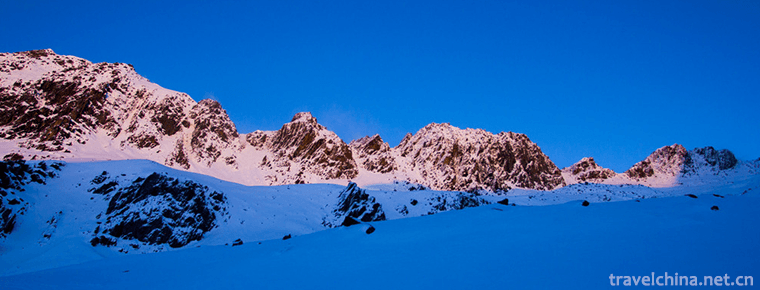
-
Yulong Snow Mountain
Yulong Snow Mountain is a snowy mountain group in Lijiang City, Yunnan Province.
Views: 155 Time 2018-10-17 -
Luofu Mountain Scenic Area
Luofu Mountain Scenic Area is a national AAAAA level scenic area. It is located on the Dongjiang River of Guangdong Province, 35 kilometers away from Boluo County, Huizhou City.
Views: 306 Time 2018-12-12 -
The Ancient City of Gaochang
Gaochang City, which began in the first century B.C., was built by the army of Tuntian in the territory of Cheshi in the Western Han Dynasty. The site of the Old Town is located in the vicinity of Har.
Views: 115 Time 2019-01-12 -
Huashan pictographs
Huashan rock paintings are located in the Zuojiang River and its tributary Mingjiang River valley of Chongzuo City, Guangxi (covering Ningming County, Longzhou County, Jiangzhou District and Fusui Cou.
Views: 173 Time 2019-01-17 -
Rob Village
Located 35 kilometers southwest of Yuli County, Luobu Village is 85 kilometers south of Korla City. The village covers 72 square kilometers and has more than 20 families.
Views: 186 Time 2019-02-06 -
Zhijin cave
Zhijin Cave, located in Guanzhai Miao Township, Zhijin County, Guizhou Province, is located on the South Bank of Liuchong River, one of the sources of Wujiang River, 120 kilometers away from Guiyang, .
Views: 138 Time 2019-03-18 -
Acrobatics in Dongbeizhuang
Dongbeizhuang acrobatics is a traditional folk acrobatics in Puyang City. Dongbeizhuang, Yuecun Township in Puyang City, is a pearl in the vast plain of northern Henan Province.
Views: 111 Time 2019-04-27 -
Jiangnan Shaoxing opera
Yueju Opera, the second largest opera in China, is also known as "the most widely circulated local opera" . Some people think that it is "the largest local opera",.
Views: 146 Time 2019-05-05 -
Mantis Boxing
Mantis boxing is one of the famous Chinese traditional Wushu schools, and it is a kind of hieroglyphic boxing. It is one of the four famous boxing in Shandong Province and one of the first nine school.
Views: 139 Time 2019-06-18 -
Yandi Festival
"Yandi Mausoleum Festival" is divided into official and folk sacrifices. Folk sacrifice began in summer, official sacrifice originated in Zhou, and Emperor sacrifice originated in Tang Dynas.
Views: 165 Time 2019-07-10 -
Overview of Guangyuan
In 2019, the GDP of Guangyuan will reach 94.185 billion yuan, an increase of 7.5% over the previous year, which is the same as that of the whole province. Among them, the added value of the primary industry was 15.301 billion yuan, an increase.
Views: 349 Time 2020-12-15 -
Suining history and culture
As a place name, "Suining" began in the Eastern Jin Dynasty. The Eastern Jin Dynasty coexisted with the Sixteen States, while Suining belonged to the Chenghan state. At that time, the rulers of various countries had been fighting with each other for years.
Views: 203 Time 2020-12-16
